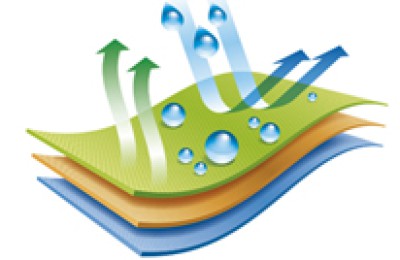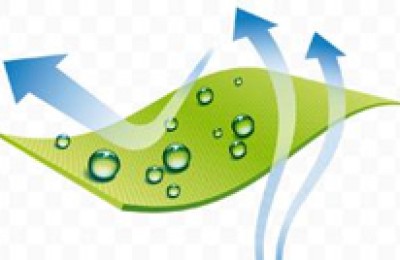In order to increase fiscal revenue, the Indian government has spared no effort in the textile industry and made a big fuss. What they value most is the research and development of technical textiles. Indian technical textiles mainly refer to geotextiles, medical textiles, agricultural textiles, protective textiles and automotive textiles. Many years have passed since the day when India proposed to vigorously develop technical textiles.
Turn the sunset in the West into the rising sun in India
Looking back at history, technical textiles have become a condition for adding value to textiles as early as World War II. It took several decades before organized technical textile development projects emerged in India. The Indian federal government approved 60 technical textile projects in one go from April 1, 1999 to February 28, 2007, with a total investment of 8.97 billion rupees. These projects were included in the Technology Update Fund Scheme (TUFS). Of these approved projects, 55 have received Rs 901.7 million.
A message on the website of the Ministry of Textiles of the Indian Government stated that according to India’s “Eleventh Five-Year Plan”, they have established a textile and jute industry working group, made recommendations to the central government, and formulated a technical textiles development plan. However, the financial tsunami broke out in 2008 and is still affecting the global economy. Due to the current negative environment, they do not expect trade to improve before 2014, and it would be wise to think so. But so far, the Indian technical textile industry still has advantages over other industries, including medical textiles and hygienic textiles, such as diapers, which are very conducive to the diversified development of the textile industry.
A research report sponsored by the Indian government and completed by ICRA Management Consulting predicts that the Indian technical textile industry is
A sunrise industry. The technical textile industry will show double-digit growth. There are opportunities in fabric development and application product conversion. However, the economic situation is severe and it is difficult for the textile industry to attract large amounts of capital. The concentrated development of high value-added technical textiles can provide opportunities for small investors. Therefore, the Indian government believes that the growth of the technical textile industry in the next few years is practical. feasible. Since this is a huge field that requires long-term input of the latest information and funding, India decided to let the government lead the development of this industry.
India has a profound background in focusing on technical textiles. The global textile media believes that whether it is an emerging economy or a developed country, the development of technical textiles can increase domestic GDP growth by about 5%. India claims that if technical textiles develop rapidly, it can bring 20% room for improvement to the Indian textile industry. This is perhaps the most direct reason why India is optimistic about the development of technical textiles.
What are Indian technical textiles like
Although many people doubt the 20% improvement space, the Indian government has spared no effort to increase investment in this area. The author found that India’s move is to enhance the development space of India’s textile industry, and is also a measure to increase domestic labor prices and enhance the international competitiveness of Indian products. Therefore, in the past decade or so, India has had a strong awareness of developing technical textiles. However, both public and private companies feel that such unrealistic practices are inconsistent with their actual level. In the opinion of Indian textile industry experts, the Indian industry should focus on two factors. One is the analysis and development of the technical textile market; the other is technical textile products suitable for the use level of end users.
In fact, the Indian technical textile market is in the ascendant, but it completely relies on government promotion and investment from all walks of life. In particular, India’s geotextile industry needs government support. The geotextile industry is a must-have for domestic infrastructure projects and is used in huge quantities, especially in transportation facilities such as dams, roads, highways and railways. If the technical content of geotextiles is improved, it will be of great benefit to the development of domestic infrastructure. India’s Ministry of Textiles hopes that the country’s Ministry of Transport and other departments will maximize the purchase of domestic geotextiles, but other departments are not responsive.
All this must be based on India’s national conditions and conditions. Thus, India in particular needs a database on geotextiles, their characteristics and economic benefits to infrastructure. Implementation needs to be done within a five-year plan. As a result, the development of the geotextile industry will become part of the realistic construction and development of India’s national infrastructure.
Indians believe that without a trustworthy national database, it is difficult to carefully weigh the overall needs of various sectors and end users in India. In other words, it can accurately determine how big the consumer market for technical fabrics is. In other words, the database can accurately locate the end users of technical fabrics, including their consumption levels.
The path to success for technical textiles in India
The production of technical textiles in India mainly relies on the public, but it must be recognized and accepted by the government before it can obtain overall procurement. In other words, once it is approved by the government, it will have market access. But in the field of consumer products, a guarantee system is adopted, and the power driving production comes from “cost.”
The market drives business, almost in any industry, and Indians understand this very well. But the Indian technical fabrics industry hasThe reality is very different. Internationally, technical textiles are divided into 12 fields, but as market driving forces, there are only three in India. One is government buyers; the other is institutional buyers; and the third is individual consumers. Government and national defense dominate the market; institutional buyers can be governments, public institutions and private enterprises. Only consumer products are priced entirely based on cost accounting. The market for consumer technical fabrics is long-lasting, especially health and medical products, which dominate the market and lead the development direction.
However, in India, although the development of consumer products has greatly helped improve health conditions, cost-benefit awareness and discussion are very limited. And due to cost issues, people are used to buying low-priced products. Such as diapers, incontinence products, feminine products and hygiene care products. Such demand is hard to push the industry forward and stimulate growth. Secondly, the country’s greatest demand for technical textiles relies on very accurate economic and technical data and feasibility to back it up, otherwise
It’s hard to get huge investment. The development of this field in India appears to be disorganized. The only one that can be trusted is the government’s munitions advance purchase program. The Indian Ministry of Defense lists large purchase orders every year, and the textile industry produces and evaluates them based on the orders.
Therefore, for the Indian technical textile industry to succeed, it must develop the market for consumer technical fabrics, taking into account both consumer affordability and government procurement needs. Only in this way can we find a unique path and find a way to success.




